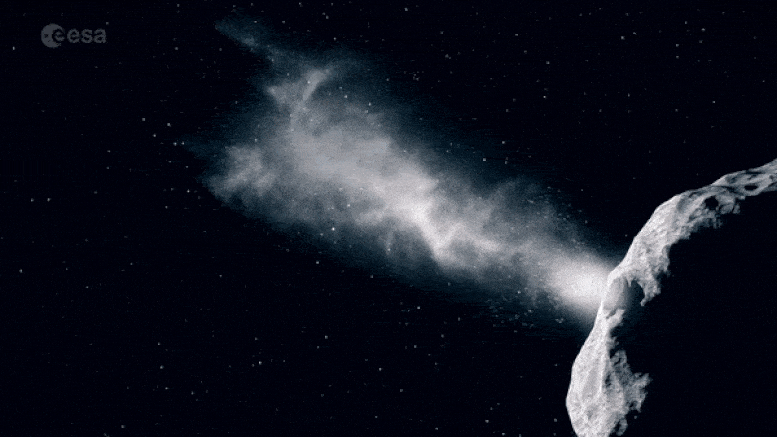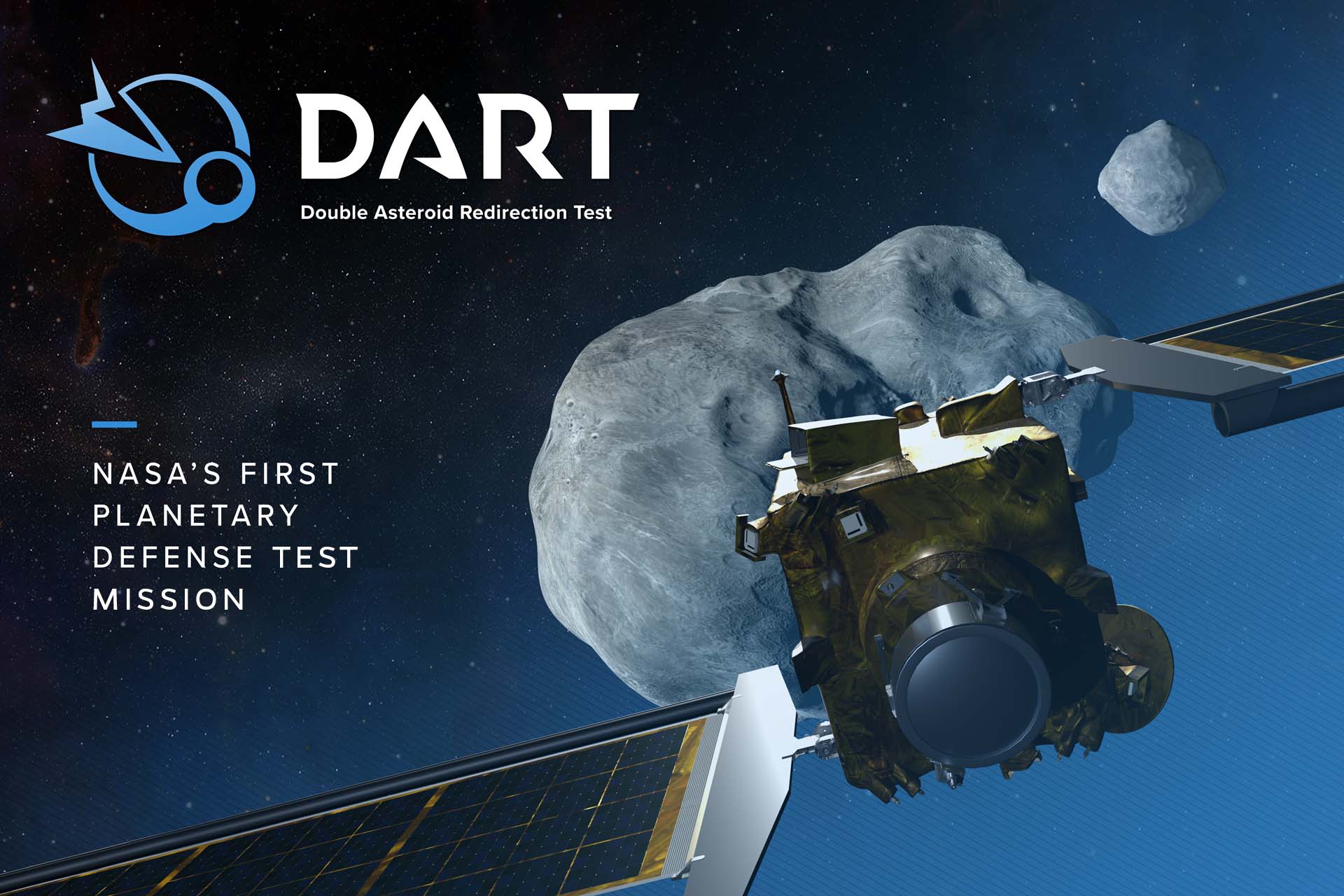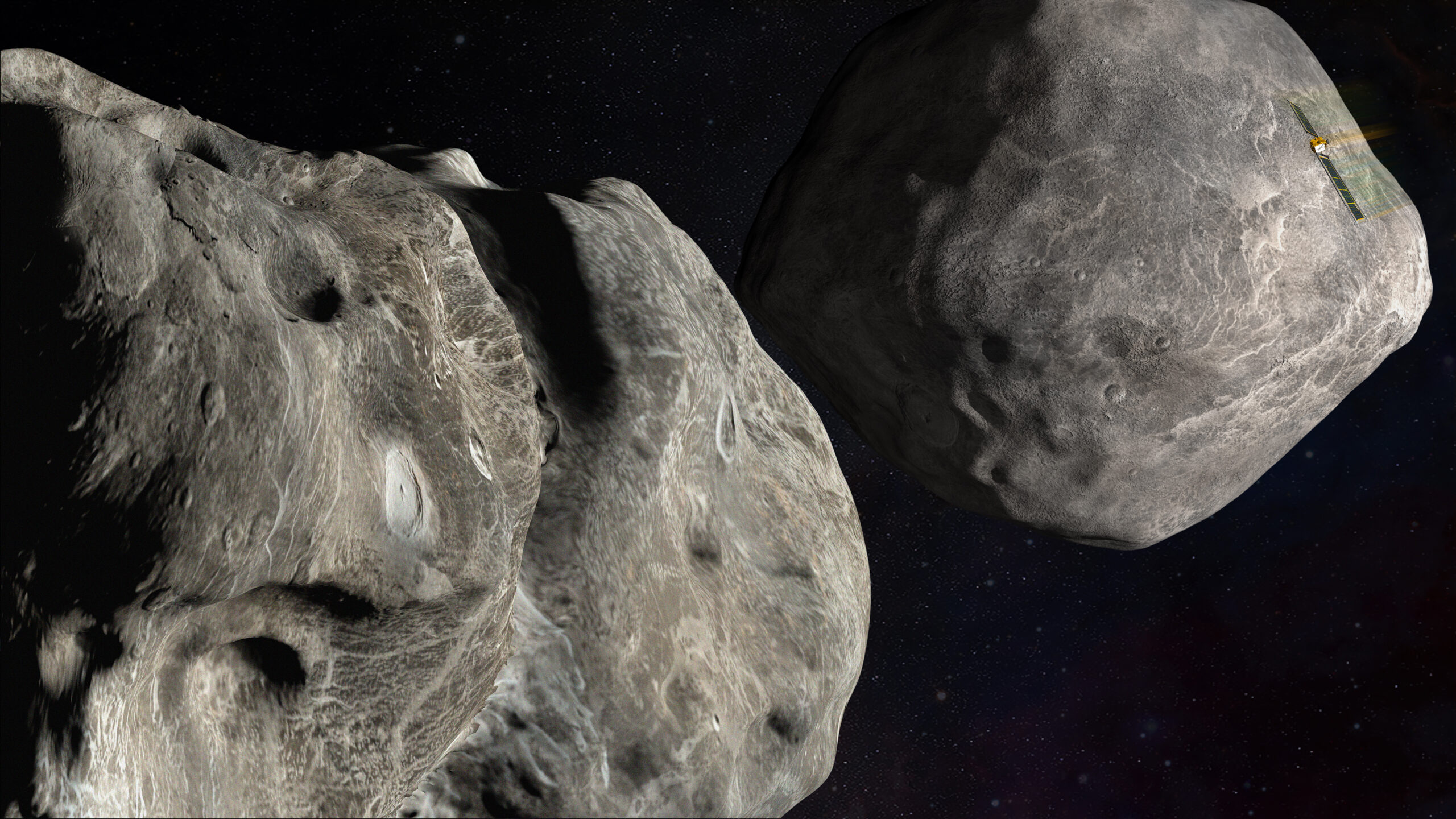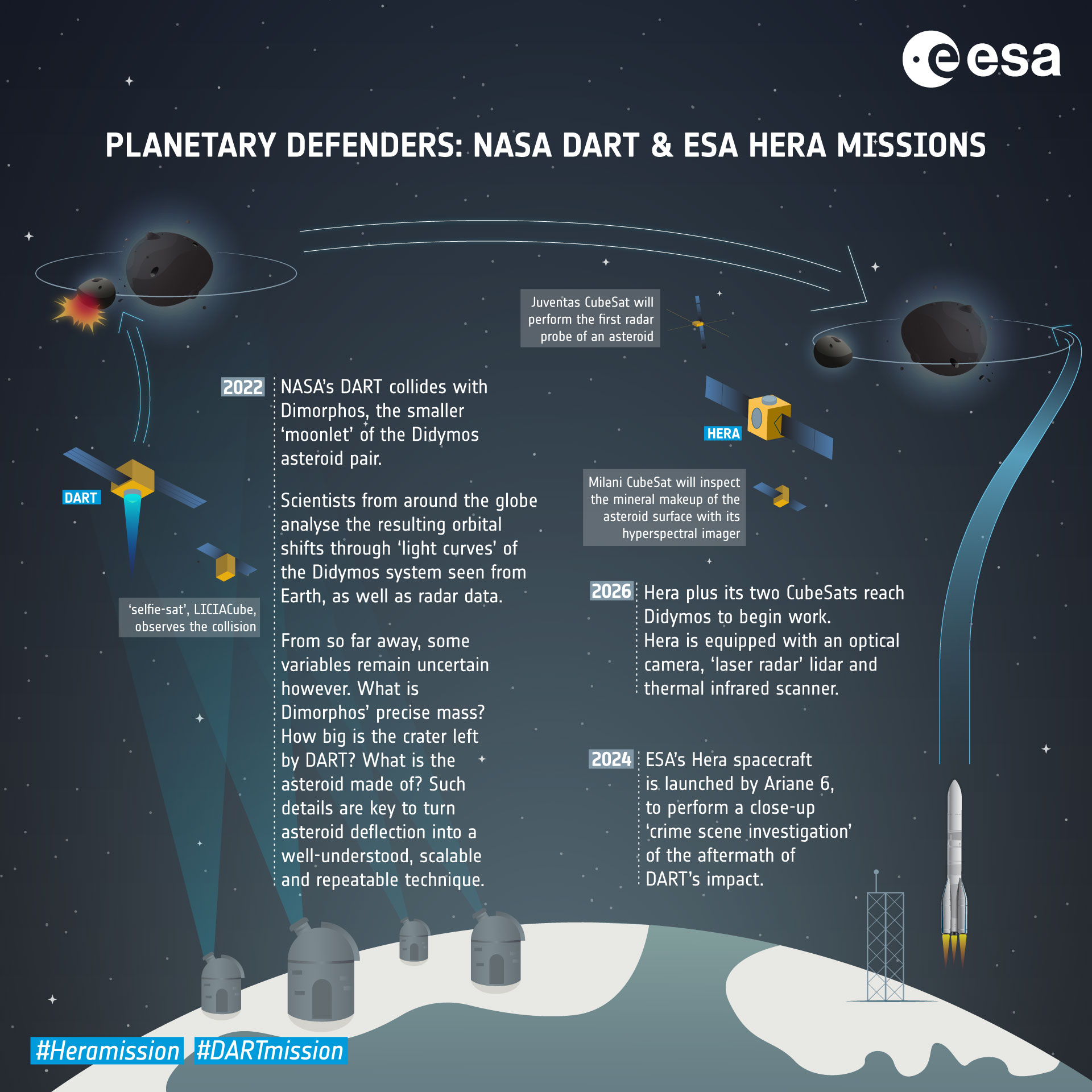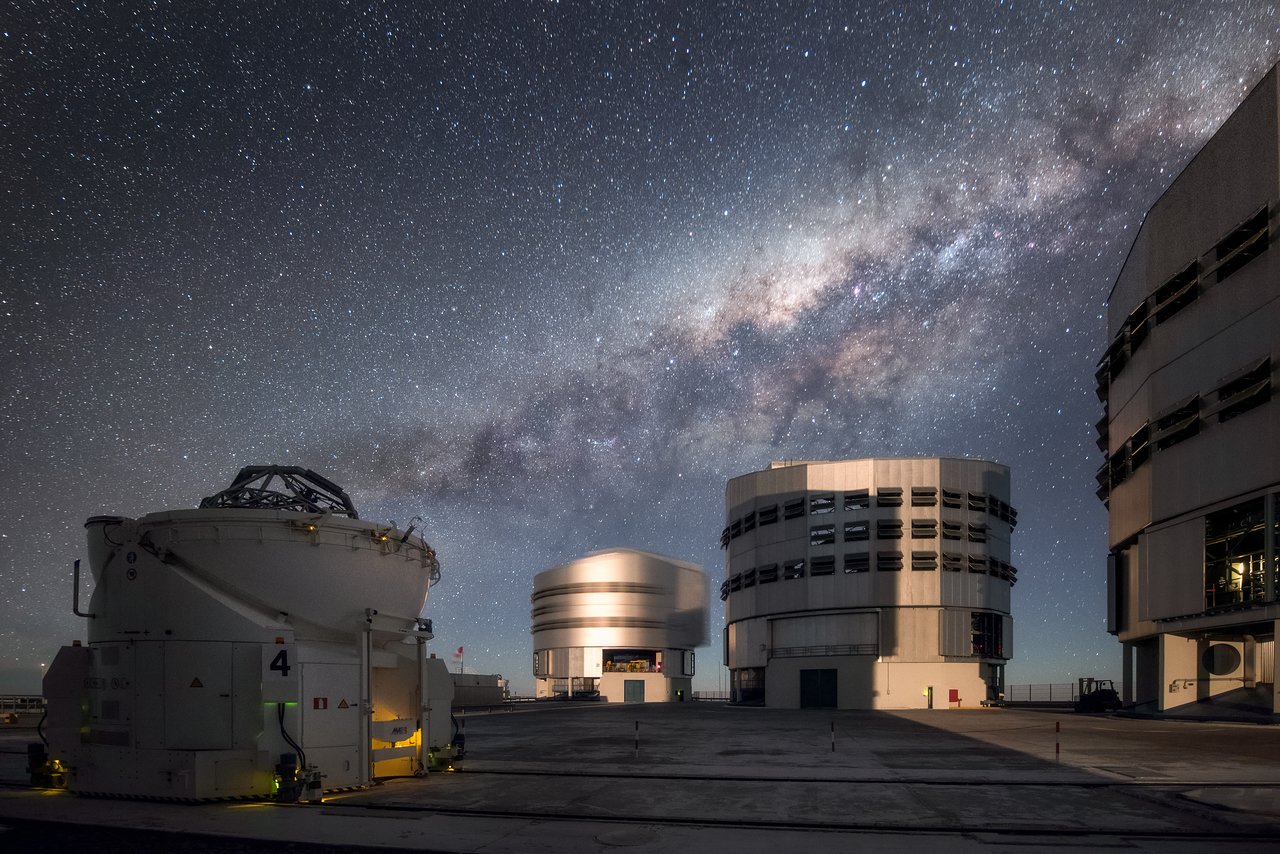NASA’s Double Asteroid Redirection Test (DART) spacecraft is preparing to crash into the asteroid Dimorphos in an attempt to change its orbit and speed – humanity’s first demonstration of an asteroid deflection technique. Space agencies, scientists and people around the globe will bear witness to this historic event in just under a week, which will most likely change what we currently know about these celestial bodies.

Patrick Michel
French National Centre for Scientific Research (CNRS)

Jean-Baptiste Vincent
DLR Institute

Julia de León
Instituto de Astrofisica de Canarias

Paolo Tortora
University of Bologna

Naomi Murdoch
ISAE-SUPAERO

Martin Jutzi
University of Bern

Sabina Raducan
University of Bern
We asked members of the Near Earth Object Modelling and Payloads for Protection (NEO-MAPP) project to share their predictions for DART mission impact, its consequences, and what the results will mean for their research and the future of planetary defense.
What do you think is going to happen when DART impacts Dimorphos?
Naomi: I am expecting the unexpected. I think we all agree that it is extremely unlikely that DART goes all the way through the asteroid Dimorphos (although that would be incredibly interesting!). However, are we going to see a tiny ejecta cloud, or huge ejecta cloud that engulfs Dimorphos (and possibly also Didymos)? If we knew the answer to that question, we wouldn’t need the DART mission!
Paolo: My expectation is that there would be a significant amount of dust and ejecta. I am not expecting a fragmentation of Dimorphos (but I may be wrong, of course). I am also expecting a detectable variation of Dimorphos orbital velocity, which we will detect via a measurement of its orbital period around Didymos.
Sabina: DART is going to be completely destroyed (melted/vaporised) and most of the fragments ejected. So it is unlikely that we will see any traces of the actual spacecraft after the impact.
Martin: It is likely that Dimorphos has a rubble pile structure and the DART impact will produce a very large crater or even a global-scale reshaping of Dimorphos.
Julia: I am sure everything will work as expected: the spacecraft will impact on the surface of Dimorphos and it is going to change its orbit around the primary asteroid. I really hope the impact creates a huge amount of ejecta so we can observe it from ground telescopes.
What are you most excited about learning from the DART impact?
Patrick: I want to learn how a body as small as 160 metres in space responds to a hypervelocity impact. This is something we cannot learn from impact experiments in a laboratory and we need a test at the real scale of an asteroid. Later with the Hera mission, I want to know in detail what the outcome of this impact is, so that we can check the predictions of our impact models (among other things).
Julia: The most exciting aspect is that, for the very first time, we will be able to measure the effects of such an impact into the movement of an asteroid, and have numbers to assess the kinetic impactor mitigation technique. In addition we will learn the internal structure of this body, something that is very complicated to study with ground-based observations.
Naomi: There are two things I’m really looking forward to: First, I cannot wait to see the first ever images of a binary asteroid up close just before the impact. What shape is the secondary? Does it look like a rubble pile or a monolithic rock? How similar are the two asteroids that make up the binary? Can we learn anything about how binary asteroids form? We have so many questions about this.
Then, of course, there is the impact itself. This is the first time we have performed a controlled impact experiment at such a large scale. I’m most excited about learning how the asteroid reacts upon impact. Will the asteroid be entirely deformed? Will the consequences be surprisingly undramatic? The answer is entirely dependent on the physical and mechanical properties of the asteroid.
Jean-Baptiste: (1) Can we change the trajectory of an asteroid? (2) What is the internal structure, is DART going to make a very large crater like Deep Impact did on comet 9P/Tempel 1?
What about your area of research will be most impacted (pun intended) by the DART mission?
Paolo: Gravity, geophysics and interior modelling of small bodies, orbit determination of asteroids.
Patrick: I will answer this question after the DART impact, because my past experiences with asteroid missions is that we are always surprised and therefore what I may say before may be irrelevant once the impact happened. This is what makes it exciting. We know we still don’t know much and are still in the process of learning how to interact with these objects, and what their amazing geological complexity, as found with past missions, means for planetary defence and science.
Julia: I work on asteroid composition, so the DART mission will provide information about the internal structure of the asteroid, which can be related to its density and so, to its composition.
Jean-Baptiste: The size of the crater relates to the material properties and the inner structure of the asteroid, which informs us about how this object was formed.
Martin: The DART mission will significantly improve our understanding of the impact process on small asteroids and of the mechanical properties of these objects.
Sabina: All areas of research, however, our understanding of impact cratering will greatly benefit from this experiment. It is the first experiment (for which we know the impact conditions and we can measure the outcome) at such large scales and the results will tell us if our numerical models and scaling laws can be extrapolated from lab-scale to planetary-scale.
Naomi: At ISAE-SUPAERO, we will use data from the DART and Hera missions to understand the physical properties of the asteroid, in order to better interpret the DART impact and the asteroid binary system. Our team (SSPA: Space Systems for Planetary Applications) also develop instrumentation such as seismometers that are specifically designed to study the internal structure of small bodies. Therefore, any information we are able to obtain about the seismic response of the asteroid is also going to be extremely important for our research and continuing instrument development.
What part of the orbital mechanics (or mathematics) of this asteroid impact do you find the most interesting or most intriguing to learn?
Patrick: What we need to know is how much momentum is transferred to Dimorphos. Is it just the moment of DART (its mass times its speed), or will there be ejecta produced which momentum will (by conservation) be added to that of DART, increasing the deflection efficiency.We will have some information from the change of the orbital period of Dimorphos around Didymos after the impact, but the actual measurement of the transferred momentum needs the knowledge of the mass of Dimorphos, which will be measured by Hera a few years later. This will give us a direct quantification of the deflection efficiency, which is what we need to know to extrapolate the result of this test to other scenarios.
Julia: The fact that we can actually modify the orbit of the secondary around the primary is really amazing by itself, but I am mainly interested in the way the kinetic energy will be transferred to the asteroid, as that will tell us many things about its structural properties.
Paolo: The change of orbital velocity following DART impact, and the consequent change in orbital period.
Sabina: How excited the system will be after the impact and if it is going to still be stable.
What do you think LICIACube will be able to image or capture that might be surprising to the general public?
Paolo: Very good question… I hope the crater and the ejecta plume will be detectable!
Patrick: Seeing images of the first ejecta produced by the impact, if any, will be spectacular. This is the first deflection test, and therefore first images of this kind. The Deep Impact mission already showed us such images on a comet, but it was not in order to change the trajectory of a celestial body. Seeing it here with this objective is really exciting.
Julia: The impact itself is going to be amazing, and I am sure LICIACube will get great images of the released material from the surface and the generated crater.
Sabina: LICIACube will take its highest resolution images of the plume, about 160 seconds after the impact. If Dimorphos is a rubble-pile, there might be boulders flying around with the ejecta. This could be really interesting!
How has your work with NEO-MAPP been integrated into DART (vs. HERA)?
Naomi: Our NEO-MAPP work plays into the DART and Hera missions in multiple ways. At ISAE-SUPAERO, the research performed as part of NEO-MAPP will contribute to determining the physical properties of the asteroid using the data from DART and LICIACube.
We are also developing innovative measurement and analysis strategies (e.g. merging data from several instruments) for asteroid missions. The NEO-MAPP team believe that by using a fusional approach to data analysis we can significantly improve the scientific return of an asteroid mission such as Hera.
Finally, our NEO-MAPP work at ISAE-SUPAERO linked to understanding the process of landing on asteroids is going to be important for planning the landing operations of the Hera CubeSats and for correctly interpreting the data from the on-board instruments.
Paolo: My role in NEO-MAPP has to do with S/C orbit determination so it impacts both DART (and LICIACube) and Hera, and this also comes to the service of the other science investigators.
Patrick: I’m the Principal Investigator of Hera and co-chair of the AIDA scientific cooperation that accompanies the development and data interpretation of DART and Hera, and as coordinator of the NEO-MAPP consortium, the integration is natural. Moreover I participate in the numerical modelling of the dynamics of Didymos and of the impact onto Dimorphos, that supports the predictions and interpretations of DART impact. This is international cooperation at its best and at the service of both science and protection of our planet from an impact.
Martin: Our NEO-MAPP work, predicting the consequences of the DART impact, such as the expected momentum transfer and Dimorphos’s post-impact morphology, is directly relevant for both DART and Hera.
Where are you going to watch the impact broadcast?
Patrick: I will be at the Applied Physics Laboratory of the John Hopkins University in Laurel, Maryland, with the DART team and Hera representatives.
Naomi: The impact is going to be at 1.14am in France. I think I’ll probably be following the events at home with my husband and a few colleagues (and my kids if they wake up and want to join the party!)
Jean-Baptiste: At home, in Berlin.
Sabina: At APL and participating at their giant party.
Martin: At Johns Hopkins APL.
Julia: Well, I am going to be observing the impact from Chile, using the instruments on the 8-m telescope VLT, at Paranal, quite an excellent location to be, I guess.
Paolo: I’ll very likely be in Turin (Italy) as my team is involved in the operations of LICIACube, the Italian nanosat which will witness the impact in real-time.

